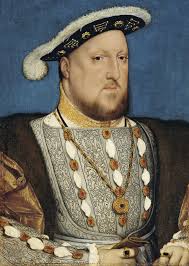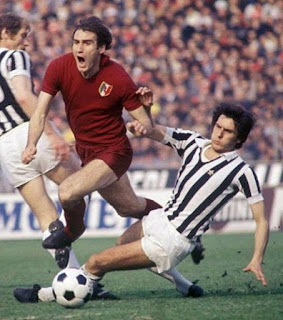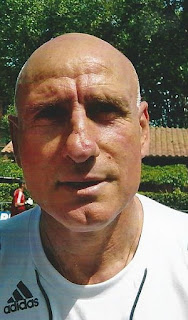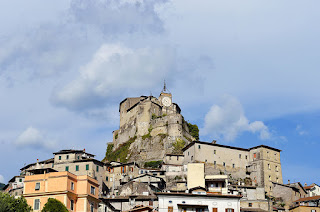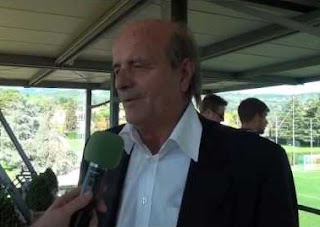Former glamour model now important voice in Italian parliament
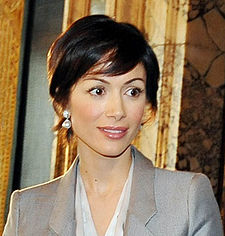 |
| Mara Carfagna has defied detractors to become a powerful politician |
Originally named Maria Rosaria Carfagna, she left high school to study dance at the school of the Teatro San Carlo in Naples, obtaining a diploma before going on to study acting and the piano.
In 1997 she won a beauty contest as Miss 1997 and participated in the finals of Miss Italia. She had her first experience in television as one of the co-presenters during the 1997-98 season of the Rai variety show, Domenica In, with Fabrizio Frizzi.
Carfagna found herself in demand as a model and posed for some magazine and calendar shoots, but at the same time was studying law at the University of Salerno, graduating with honours in 2001.
More television work came her ways as a glamourous co-presenter of the Mediaset show La domenica del villaggio alongside Davide Mengacci, moving on to present another entertainment show Piazza grande together with Giancarlo Magalli.
 |
| Former premier Silvio Berlusconi made Mara Carfagna a minister |
In 2006 she was nominated as a candidate in Campania and was elected to the Chamber of Deputies. She soon attracted the attention of Berlusconi, who was also owner of the Mediaset TV channels for which she worked, who made a tongue-in-cheek but demeaning suggestion that his party should practise the ancient law of primae noctis, which allowed feudal lords to select any female subject of his choice for his sexual gratification.
Carfagna ignored the comment and gained a reputation as a hard-working parliamentarian. Berlusconi lost his position as prime minister at the 2006 election but won it back two years later.
When the controversial leader named Carfagna in his new cabinet as Minister for Equal Opportunity, she attracted a new wave of publicity.
The magazine Maxim, for whom she had appeared as a cover model, ran some of her pictures again, ranking her at No 1 in a feature entitled “World’s hottest politicians.”
 |
| Carfagna (right) greets former president Giorgio Napolitano on the occasion of International Women's Day in 2009 |
As a minister, she has been an outspoken campaigner in a number of areas, from the level of crime in her home city of Salerno to the management of waste disposal in Campania, as well as prostitution, homophobia and violence against women.
In 2008, a few months after taking office, she attracted some ironic comments from political writers and opposition politicians when she proposed a law making street prostitution a crime, with fines for both clients and prostitutes, over and above existing laws forbidding the exploitation of prostitutes by pimps. The bill was her first major initiative as a minister.
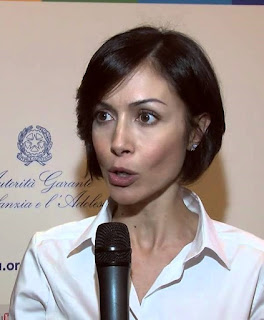 |
| Carfagna has clashed with Italy's controversial deputy prime minister Matteo Salvini |
In 2009 she became the first political promoter of the law against stalking, later included in the penal code thanks to the Maroni decree.
Also in 2009 she launched the first campaign against homophobia and against violence based on sexual orientation to be carried out by an Italian government.
Carfagna has continued to build her reputation as a politician determined to bring about change and in March this year was elected vice president of the Chamber of Deputies as a reflection of the respect she has gained. Recently, she has been an outspoken critic of Italy's controversial current deputy prime minister, the Lega politician Matteo Salvini.
| Via Botteghelle, typical of the narrow streets to be found in Salerno's historic old town |
Salerno, situated some 55km (34 miles) south of Naples with a population of about 133,000, is a city with a reputation as an industrial port and is often overlooked by visitors to Campania, who tend to flock to Naples, Sorrento, the Amalfi coast and the Cilento. Yet it has an attractive waterfront and a quaint old town, at the heart of which is the Duomo, originally built in the 11th century, which houses in its crypt is the tomb of one of the twelve apostles of Christ, Saint Matthew the Evangelist. It is also a good base for excursions both to the Amalfi coast, just a few kilometres to the north, and the Cilento, which can be found at the southern end of the Gulf of Salerno. Hotels are also cheaper than at the more fashionable resorts.
Hotels in Salerno by TripAdvisor
 |
| Amalfi occupies a spectacularly beautiful setting on the Campania coast between Naples and Salerno |
Amalfi, just 25km (16 miles) along the coast from Salerno, occupies a dramatic natural setting at the foot of steep cliffs along the stretch of spectacular Campania coastline that takes its name from the town and is one of Italy’s best-known tourist attractions. The town itself attracts huge numbers of visitors each year. Its ninth-century Duomo dominates the town's central piazza, sitting at the top of a wide flight of steps. The cloister (Chiostro del Paradiso) and museum close by house sculptures, mosaics and other relics. Radiating away from the cathedral, narrow streets offer many souvenir shops and cafes for visitors. Amalfi is accessible by bus from Sorrento and Salerno and there are boat services that run along the coast.
More reading:
Silvio Berlusconi - the entrepreneur who became Italy's most controversial prime minister
How Irene Pavetti swapped political office for television
The political campaigner Emma Bonino
Also on this day:
1737: The death of violin maker Antonio Stradivari
1957: The death of entrepreneur Camillo Castiglioni
1966: The birth of record-breaking goalkeeper Gianluca Pagliuca
Home

